Regulation and Optimization of Urban Water and Land Resources Utilization for Low Carbon Development: A Case Study of Tianjin, China
Abstract
:1. Introduction
2. Methods and Data
2.1. The Regulation Mechanism of Urban Water and Land Resources Utilization for Low Carbon Development
2.2. SD-MOP Model
- (1)
- On the basis of conducting a system analysis, the SD model is established to simulate the system development. Then, the key decision variables that have a greater impact on the system are identified through the sensitivity analysis and system running.
- (2)
- Taking the key decision variables as independent variables, the objective functions and constraints are used to build a MOP model. An appropriate method is chosen to solve the model and obtain the optimal values of the key decision variables.
- (3)
- The optimal values of the key decision variables are fed into the SD model, the model is run and the simulation results are analyzed. Then, the MOP model is adjusted according to the decision requirements. Finally, a satisfied optimal decision scheme is found.
2.3. SD Model and Regulation Scheme Design
2.4. Mop Model and Regulation Scheme Optimization
2.4.1. Key Decision Variables Identification
2.4.2. Objective Function Establishment
2.4.3. Constraint Conditions Determination
2.4.4. Optimal Solution to the MOP Model
- Constructing the normalized initial matrix.
- 2.
- Determining the positive and negative solutions.
- 3.
- Setting weights of objective functions.
- 4.
- Calculating the distances between the Pareto-optimal solutions and the positive and negative ideal solutions, which are expressed as and , respectively.
- 5.
- Calculating the distances between the Pareto-optimal solutions and the optimal scheme (). The closer the distance value is to 1, the better the evaluation scheme is.
2.5. Data
3. Results and Analysis
3.1. Design of Regulation Scheme for Carbon Reduction Goal
3.2. Optimization of Regulation Scheme for Low Carbon Development Goal
3.3. Analysis of Optimal Regulation Scheme
4. Conclusions and Policy Implications
4.1. Conclusions
4.2. Policy Implications
Author Contributions
Funding
Institutional Review Board Statement
Informed Consent Statement
Data Availability Statement
Conflicts of Interest
References
- Bai, Y.; Deng, X.; Gibson, J.; Zhao, Z.; Xu, H. How does urbanization affect residential CO2 emissions? An analysis on urban agglomerations of China. J. Clean. Prod. 2019, 209, 876–885. [Google Scholar] [CrossRef]
- Friedlingstein, P.; O’Sullivan, M.; Jones, M.W.; Andrew, R.M.; Hauck, J.; Olsen, A.; Peters, G.P.; Peters, W.; Pongratz, J.; Sitch, S.; et al. Global carbon budget 2020. Earth Syst. Sci. Data 2020, 12, 3269–3340. [Google Scholar] [CrossRef]
- Mallapaty, S. How China could be carbon neutral by mid-century. Nature 2020, 586, 482–483. [Google Scholar] [CrossRef]
- Stoyanova, S.; Nyeste, K.; Georgieva, E.; Uchikov, P.; Velcheva, I.; Yancheva, V. Toxicological impact of a neonicotinoid insecticide and an organophosphorus fungicide on bighead carp (Hypophthalmichthys nobilis Richardson, 1845) gills: A comparative study. North-West. J. Zool. 2020, 16, 64–73. [Google Scholar]
- Yancheva, V.; Georgieva, E.; Stoyanova, S.; Velcheva, I.; Somogyi, D.; Nyeste, K.; Antal, L. A histopathological study on the Caucasian dwarf goby from an anthropogenically loaded site in Hungary using multiple tissues analyses. Acta Zool. 2020, 101, 431–446. [Google Scholar] [CrossRef]
- Skaggs, R.; Hibbard, K.A.; Frumhoff, P.C.; Lowry, T.; Middleton, R.; Pate, R.; Tidwell, V.C.; Arnold, J.G.; Averyt, K.; Janetos, A.C.; et al. Climate and Energy-Water-Land System Interactions Technical Report to the U.S. Department of Energy in Support of the National Climate Assessment; Pacific Northwest National Lab. (PNNL): Richland, WA, USA, 2012. [Google Scholar] [CrossRef] [Green Version]
- Zhao, R.Q.; Liu, Y.; Tian, M.M.; Ding, M.L.; Cao, L.H.; Zhang, Z.P.; Chuai, X.W.; Xiao, L.G.; Yao, L.G. Impacts of water and land resources exploitation on agricultural carbon emissions: The water-land- energy- carbon nexus. Land Use Pol. 2018, 72, 480–492. [Google Scholar] [CrossRef]
- Kothavala, Z.; Arain, M.A.; Black, T.A. The simulation of energy, water vapor and carbon dioxide fluxes over common crops by the Canadian Land Surface Scheme (CLASS). Agric. For. Meteorol. 2005, 133, 89–108. [Google Scholar] [CrossRef]
- Zhang, Y.C.; Shen, Y.J.; Xu, X.L.; Sun, H.Y.; Li, F.; Wang, Q. Characteristics of the water-energy-carbon fluxes of irrigated pear (Pyrus bretschneideri Rehd) orchards in the North China Plain. Agric. Water Manag. 2013, 128, 140–148. [Google Scholar] [CrossRef]
- Chhipi-Shrestha, G.; Hewage, K.; Sadiq, R. Water-energy-carbon nexus modeling for urban water systems: System dynamics approach. J. Water Resour. Plan. Manage.-ASCE 2017, 143, 04017016. [Google Scholar] [CrossRef]
- Wang, X.C.; Klemes, J.J.; Wang, Y.T.; Dong, X.B.; Wei, H.J.; Xu, Z.H.; Varbanov, P.S. Water-energy-carbon emissions nexus analysis of China: An environmental input-output model-based approach. Appl. Energy 2020, 261, 114431. [Google Scholar] [CrossRef]
- Rodriguez, N.; Armenteras, D.; Retana, J. National ecosystems services priorities for planning carbon and water resource management in Colombia. Land Use Pol. 2015, 42, 609–618. [Google Scholar] [CrossRef]
- Wang, J.; Epstein, H.E.; Wang, L.X. Soil CO2 flux and its controls during secondary succession. J. Geophys. Res.-Biogeosci. 2010, 115, G02005. [Google Scholar] [CrossRef]
- Fang, J.Y.; Chen, A.P.; Peng, C.H.; Zhao, S.Q.; Ci, L.J. Changes in forest biomass carbon storage in China between 1949 and 1998. Science 2001, 292, 2320–2322. [Google Scholar] [CrossRef] [PubMed]
- Ali, G.; Nitivattananon, V. Exercising multidisciplinary approach to assess interrelationship between energy use, carbon emission and land use change in a metropolitan city of Pakistan. Renew. Sust. Energ. Rev. 2012, 16, 775–786. [Google Scholar] [CrossRef]
- Zhang, R.S.; Matsushima, K.; Kobayashi, K. Can land use planning help mitigate transport-related carbon emissions? A case of Changzhou. Land Use Pol. 2018, 74, 32–40. [Google Scholar] [CrossRef]
- Chuai, X.W.; Huang, X.J.; Wang, W.J.; Zhao, R.Q.; Zhang, M.; Wu, C.Y. Land use, total carbon emissions change and low carbon land management in coastal Jiangsu, China. J. Clean. Prod. 2015, 103, 77–86. [Google Scholar] [CrossRef]
- Fang, K.; Heijungs, R.; Snoo, G.R.D. Theoretical exploration for the combination of the ecological, energy, carbon, and water footprints: Overview of a footprint family. Ecol. Indic. 2014, 36, 508–518. [Google Scholar] [CrossRef]
- Ali, Y. Carbon, water and land use accounting: Consumption vs production perspectives. Renew. Sust. Energ. Rev. 2017, 67, 921–934. [Google Scholar] [CrossRef]
- Watanabe, M.D.B.; Ortega, E. Dynamic emergy accounting of water and carbon ecosystem services: A model to simulate the impacts of land-use change. Ecol. Model. 2014, 271, 113–131. [Google Scholar] [CrossRef]
- Ballestero, E.; Alarcòn, S.; García-Bernabeu, A. Establishing politically feasible water markets: A multi-criteria approach. J. Environ. Manage. 2002, 65, 411–429. [Google Scholar] [CrossRef]
- Liu, D.; Ji, X.; Tang, J. A fuzzy cooperative game theoretic approach for multinational water resource spatiotemporal allocation. Eur. J. Oper. Res. 2020, 282, 1025–1037. [Google Scholar] [CrossRef]
- Murali, K.; Lim, M.K.; Petruzzi, N.C. Municipal groundwater management: Optimal allocation and control of a renewable natural resource. Prod. Oper. Manag. 2015, 24, 1453–1472. [Google Scholar] [CrossRef]
- Pennington, D.N.; Dalzell, B.; Nelson, E.; Mulla, D.; Taff, S.; Hawthorne, P.; Polasky, S. Cost-effective land use planning: Optimizing land use and land management patterns to maximize social benefits. Ecol. Econ. 2017, 139, 75–90. [Google Scholar] [CrossRef]
- Leibowicz, B.D. Urban land use and transportation planning for climate change mitigation: A theoretical framework. Eur. J. Oper. Res. 2020, 284, 604–616. [Google Scholar] [CrossRef]
- Biswas, A.; Pal, B.B. Application of fuzzy goal programming technique to land use planning in agricultural system. Omega 2005, 33, 391–398. [Google Scholar] [CrossRef]
- Peralta, R.C.; Cantiller, R.R.A.; Terry, J.E. Optimal large-scale conjunctive water-use planning: Case Study. J. Water Resour. Plan. Manage.-ASCE. 1995, 121, 471–478. [Google Scholar] [CrossRef]
- Cheng, K.; Fu, Q.; Li, T.X.; Jiang, Q.X. Regional food security risk assessment under the coordinated development of water resources. Nat. Hazards. 2015, 78, 603–619. [Google Scholar] [CrossRef]
- Xu, H.; Brown, D.G.; Moore, M.R.; Currie, W.S. Optimizing spatial land management to balance water quality and economic returns in a Lake Erie Watershed. Ecol. Econ. 2018, 145, 104–114. [Google Scholar] [CrossRef]
- Hirsch, C.; Krisztin, T.; See, L. Water resources as determinants for foreign direct investments inland-A gravity analysis of foreign land acquisitions. Ecol. Econ. 2020, 170, 106516. [Google Scholar] [CrossRef]
- Das, B.; Singh, A.; Panda, S.N.; Yasuda, H. Optimal land and water resources allocation policies for sustainable irrigated agriculture. Land Use Pol. 2015, 42, 527–537. [Google Scholar] [CrossRef]
- Chen, J.F.; Yu, C.; Cai, M.; Wang, H.; Zhou, P. Multi-objective optimal allocation of urban water resources while considering conflict resolution based on the PSO algorithm: A case study of Kunming, China. Sustainability 2020, 12, 1337. [Google Scholar] [CrossRef] [Green Version]
- Sepaskhah, A.R.; Azizian, A.; Tavakoli, A.R. Optimal applied water and nitrogen for winter wheat under variable seasonal rainfall and planning scenarios for consequent crops in semi-arid region. Agric. Water Manag. 2006, 84, 113–122. [Google Scholar] [CrossRef]
- Schwaab, J.; Deb, K.; Goodman, E.; Lautenbach, S.; Strien, M.J.V.; Grêt-Regamey, A. Improving the performance of genetic algorithms for land-use allocation problems. Int. J. Geogr. Inf. Sci. 2018, 32, 907–930. [Google Scholar] [CrossRef]
- Tian, J.; Guo, S.L.; Liu, D.D.; Pan, Z.K.; Hong, X.J. A fair approach for multi-objective water resources allocation. Water Resour. Manag. 2019, 33, 3633–3653. [Google Scholar] [CrossRef]
- West, T.A.P.; Grogan, K.A.; Swisher, M.E.; Caviglia-Harris, J.L.; Sills, E.; Harris, D.; Roberts, D.; Putz, F.E. A hybrid optimization-agent-based model of REDD plus payments to households on an old deforestation frontier in the Brazilian Amazon. Environ. Modell. Softw. 2018, 100, 159–174. [Google Scholar] [CrossRef]
- Lahiji, R.N.; Dinan, N.M.; Liaghati, H.; Ghaffarzadeh, H.; Vafaeinejad, A. Scenario-based estimation of catchment carbon storage: Linking multi-objective land allocation with InVEST model in a mixed agriculture-forest landscape. Front. Earth Sci. 2020, 14, 637–646. [Google Scholar] [CrossRef]
- Esteves, E.M.M.; Brigagao, G.V.; Morgado, C.R.V. Multi-objective optimization of integrated crop-livestock system for biofuels production: A life-cycle approach. Renew. Sust. Energ. Rev. 2021, 152, 111671. [Google Scholar] [CrossRef]
- Mirchi, A.; Madani, K.; Watkins, D.; Ahmad, S. Synthesis of system dynamics tools for holistic conceptualization of water resources problems. Water Resour. Manag. 2012, 26, 2421–2442. [Google Scholar] [CrossRef]
- Ramezanian, R.; Hajipour, M. Integrated framework of system dynamics and meta-heuristic for multi-objective land use planning problem. Landsc. Ecol. Eng. 2020, 16, 113–133. [Google Scholar] [CrossRef]
- Wang, Y.Z.; Alexander, F.; Ping, G. A model integrating the system dynamic model with the risk based two-stage stochastic robust programming model for agricultural-ecological water resources management. Stoch. Environ. Res. Risk Assess. 2021, 35, 1953–1968. [Google Scholar] [CrossRef]
- Zhang, X.H.; Zhang, H.W.; Zhang, B.A.; Liu, H.B. SD-MOP integrate model and its application in water resources plan: A case study of Qinhuangdao. Kybernetes 2010, 39, 1384–1391. [Google Scholar] [CrossRef]
- Xu, J.P.; Yang, J.; Yao, L.M. Transportation structure analysis using SD-MOP in World Modern Garden City: A case study in China. Discrete Dyn. Nat. Soc. 2012, 2012, 710854. [Google Scholar] [CrossRef]
- Deb, K.; Pratap, A.; Agarwal, S.; Meyarivan, T. A fast and elitist multi-objective genetic algorithm: NSGA-II. IEEE Trans. Evol. Comput. 2002, 6, 182–197. [Google Scholar] [CrossRef] [Green Version]
- Sofia, A.S.; GaneshKumar, P. Multi-objective task scheduling to minimize energy consumption and makespan of cloud computing using NSGA-II. J. Netw. Syst. Manag. 2018, 26, 463–485. [Google Scholar] [CrossRef]
- Azari, A.; Hamzeh, S.; Naderi, S. Multi-objective optimization of the reservoir system operation by using the hedging policy. Water Resour. Manag. 2018, 32, 2061–2078. [Google Scholar] [CrossRef]
- Azizi, E.; Javanshir, H.; Jafari, F.; Ebrahimnejad, S. Designing a sustainable agile retail supply chain using multi-objective optimization methods (Case study: SAIPA Company). Sci. Iran. 2021, 28, 2933–2947. [Google Scholar] [CrossRef] [Green Version]
- Saaty, T.L. Absolute and relative measurement with the AHP.The most livable cities in the United States. Socio-Econ. Plann. Sci. 1986, 20, 327–331. [Google Scholar] [CrossRef]
- Arslan, M.O.; Altinok, H. A system dynamics model of income distribution between labor and capital for turkey. Econ. Comput. Econ. Cybern. Stud. 2018, 52, 241–256. [Google Scholar] [CrossRef]


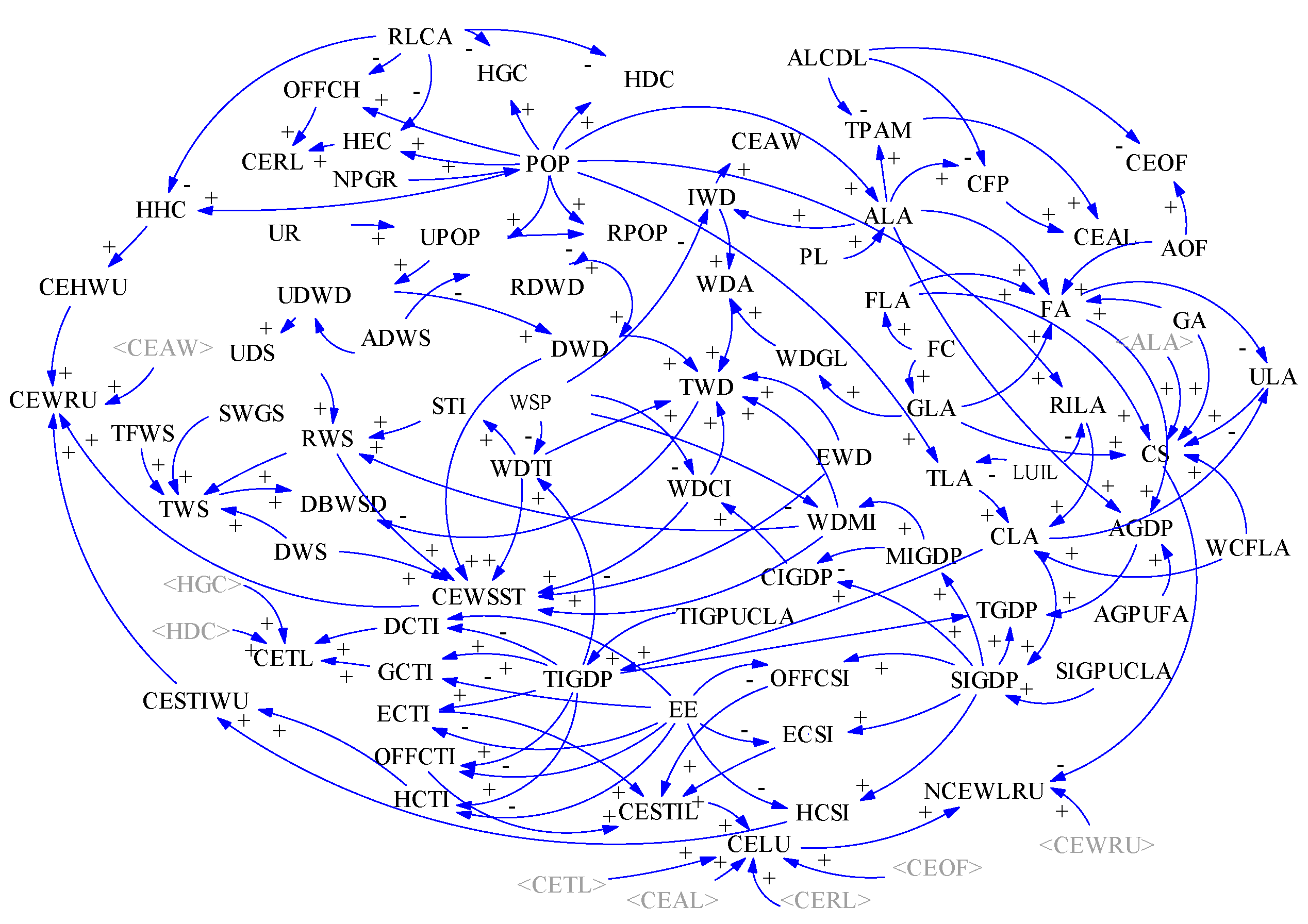
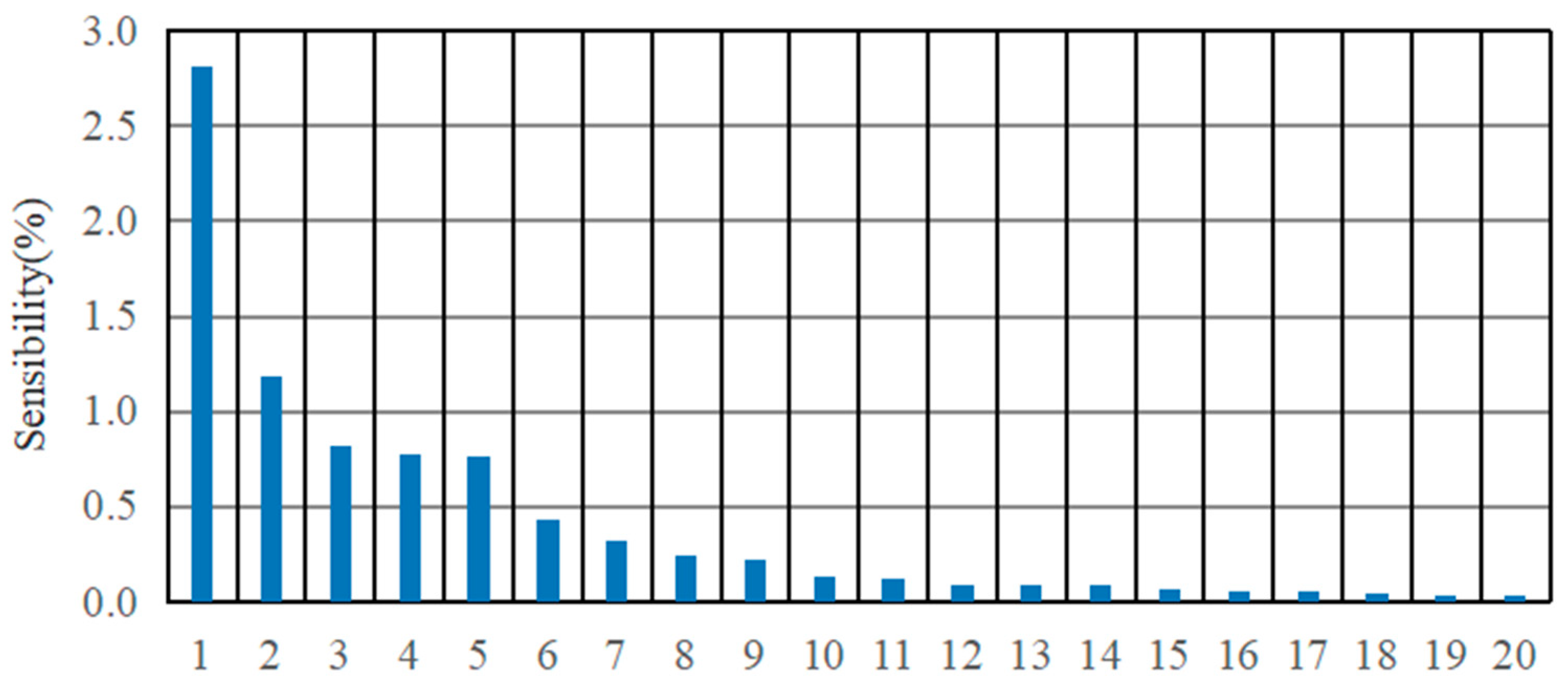


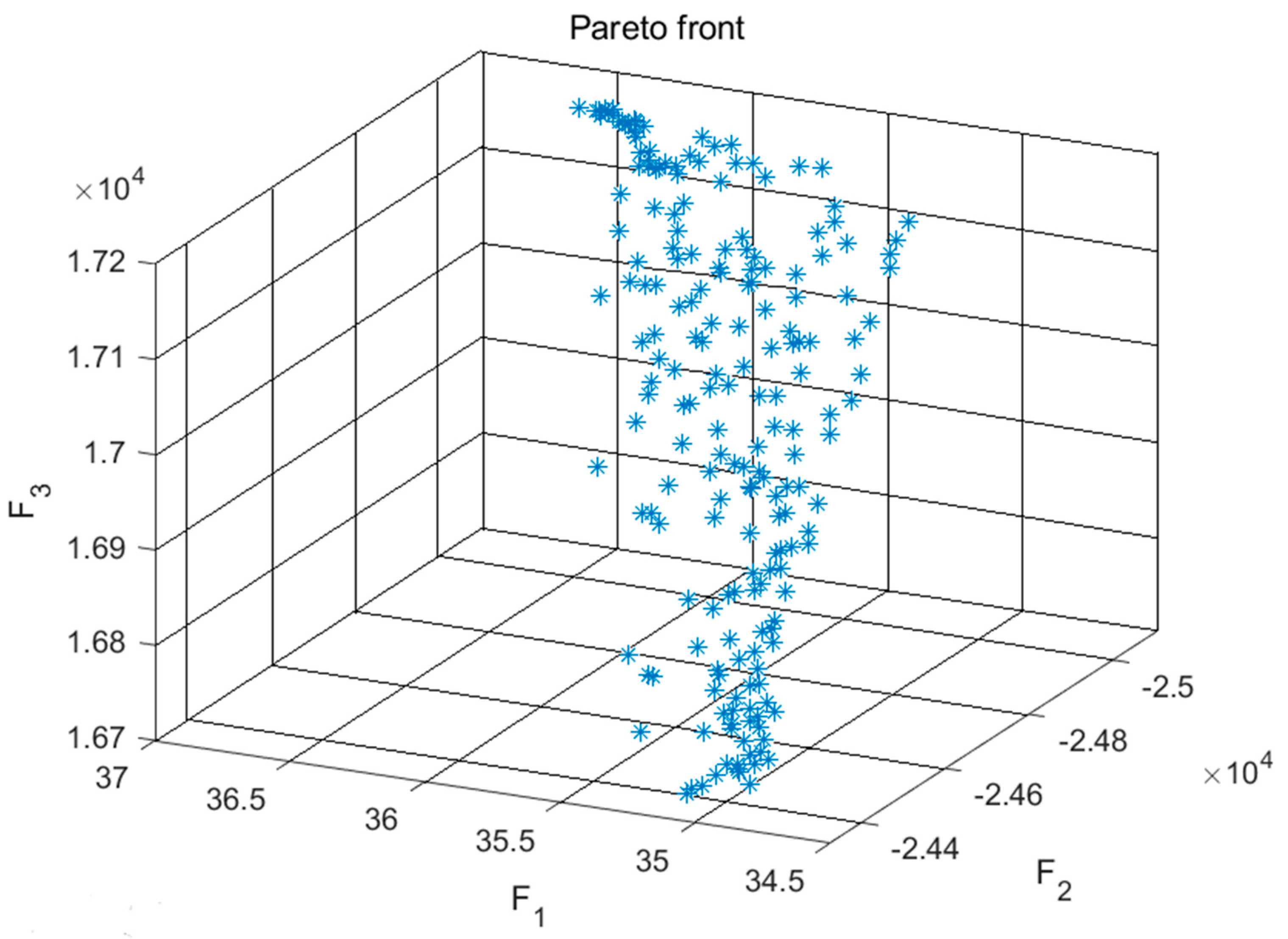
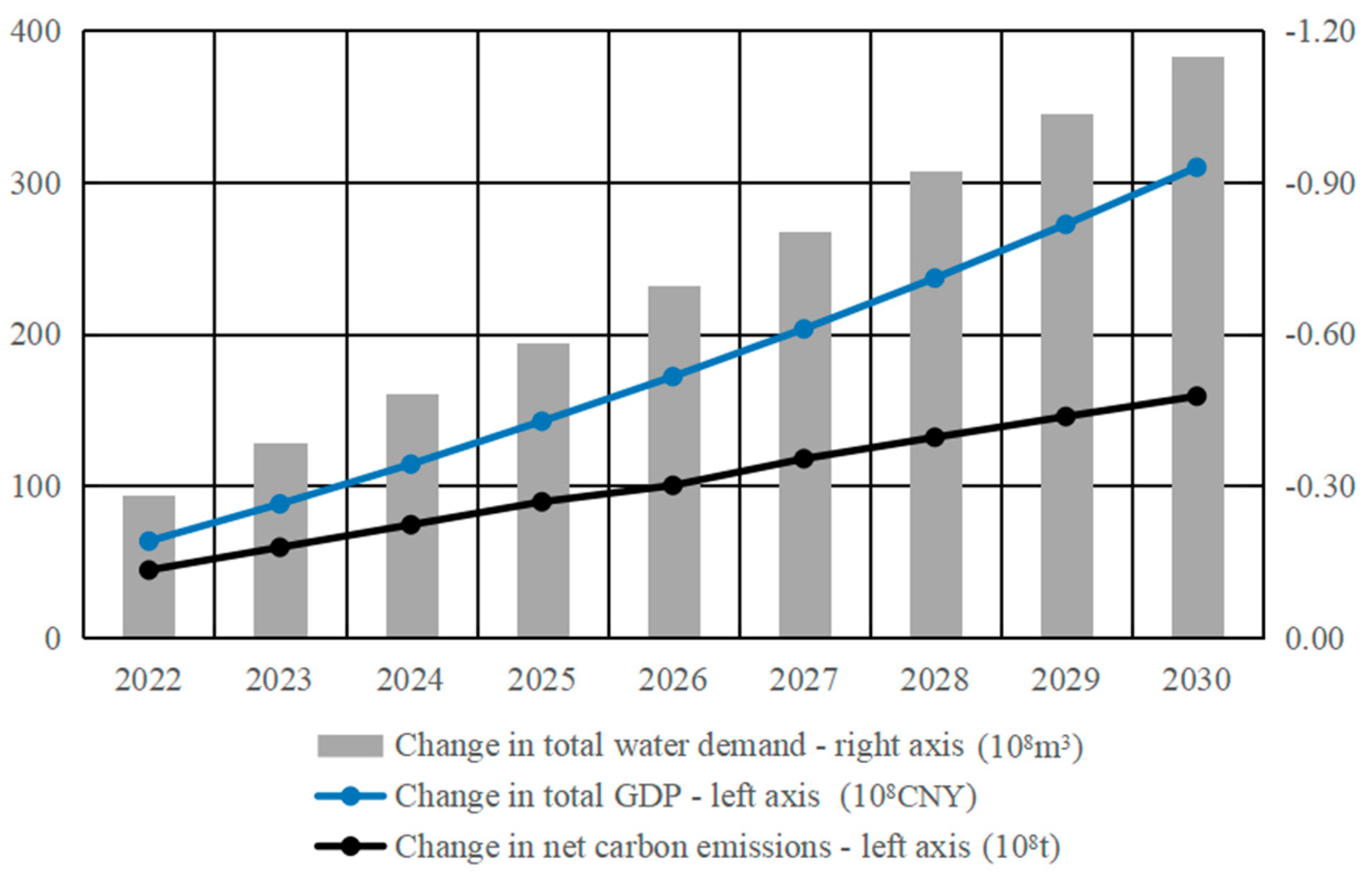
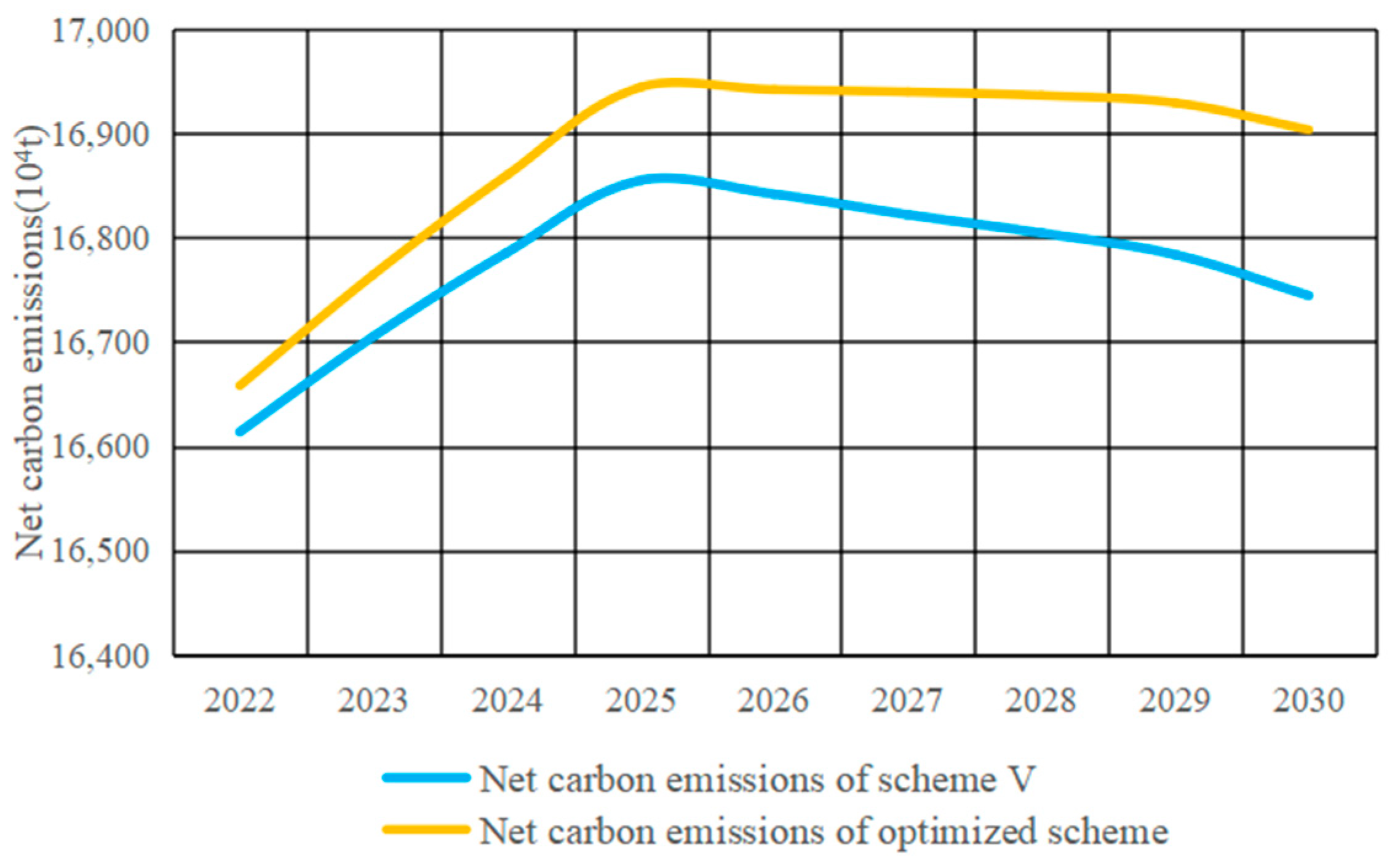
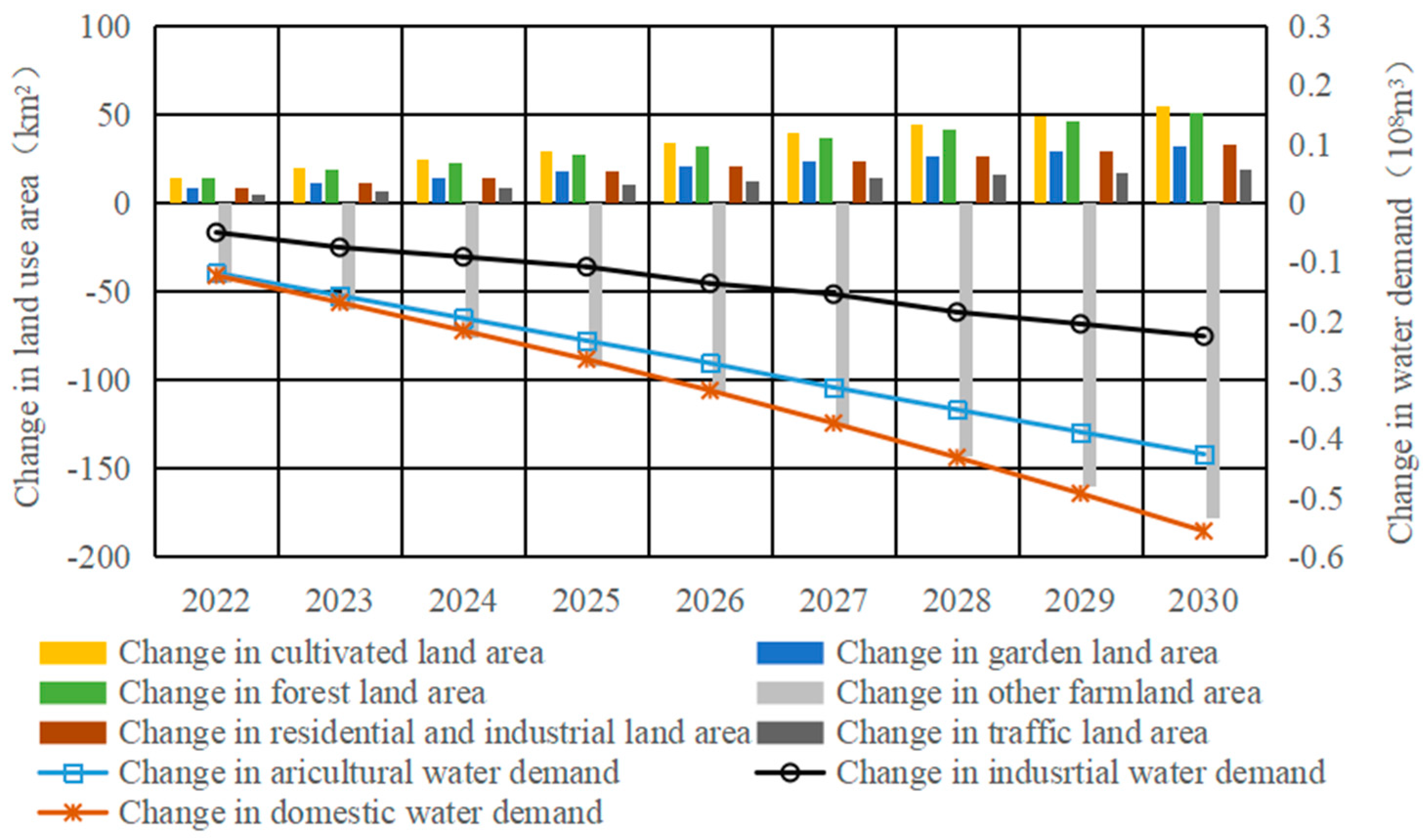
| Subsystem | Main Variables |
|---|---|
| Land use subsystem | Arable land area, forest land area, garden land area, grassland area, other farmland area, residential and industrial land area, traffic land area, water conservancy facilities land area, and unused land area. |
| Water resource utilization subsystem | Total water demand, water demand of agriculture, water demand of manufacturing industry, water demand of tertiary industry, water demand of construction industry, domestic water demand, ecological water demand, total water supply, surface water and groundwater supply, transfer water supply, desalination water supply, and reused water supply. |
| Economic subsystem | Total GDP, agriculture GDP, secondary industry GDP, tertiary industry GDP, agriculture GDP per unit farmland area, secondary industry GDP per unit construction land area, and tertiary industry GDP per unit construction land area. |
| Population subsystem | Total population, urban population, rural population, and net population growth rate. |
| Energy consumption subsystem | Electricity/heat/other fossil fuel consumption of secondary industry, electricity/heat/diesel/gasoline/other fossil fuel consumption of tertiary industry and household, and total power of agricultural machinery. |
| Regulation Measures | Variable Settings | Scheme I | Scheme II | Scheme III | Scheme IV | Scheme V |
|---|---|---|---|---|---|---|
| Industrial structure optimization | Proportion of secondary industry GDP | 6 percentage points decrease | 7 percentage points decrease | 7 percentage points decrease | 8 percentage points decrease | 8 percentage points decrease |
| Proportion of tertiary industry GDP | 6 percentage points increase | 7 percentage points increase | 7 percentage points increase | 8 percentage points increase | 8 percentage points increase | |
| Industrial energy efficiency improvement | Energy consumption per unit GDP of secondary industry/tertiary industry | 32% decrease | 34% decrease | 34% decrease | 35% decrease | 35% decrease |
| Increasing of residents’ low carbon awareness | Per capita residential energy consumption | 2% decrease | 2% decrease | 4% decrease | 4% decrease | 5% decrease |
| Energy structure optimization | Proportion of raw coal consumption of secondary industry | 0.65 percentage points decrease | 1 percentage points decrease | 1 percentage points decrease | 1.35 percentage points decrease | 1.35 percentage points decrease |
| Proportion of natural gas consumption of secondary industry | 0.65 percentage points increase | 1 percentage points increase | 1 percentage points increase | 1.35 percentage points increase | 1.35 percentage points increase | |
| Proportion of raw coal consumption of tertiary industry/household | 0.03 percentage points decrease | 0.04 percentage points decrease | 0.04 percentage points decrease | 0.05 percentage points decrease | 0.05 percentage points decrease | |
| Proportion of natural gas consumption of tertiary industry/household | 0.03 percentage points increase | 0.04 percentage points increase | 0.04 percentage points increase | 0.05 percentage points increase | 0.05 percentage points increase | |
| Water saving irrigation | Irrigation water quota | 2% decrease | 2% decrease | 3% decrease | 3% decrease | 5% decrease |
| Industrial water saving | Water demand per unit of industry GDP | 3% decrease | 3% decrease | 5% decrease | 5% decrease | 7% decrease |
| Domestic water saving | Domestic water demand coefficient for urban residents | 1% decrease | 1% decrease | 2% decrease | 2% decrease | 3% decrease |
| Land use structure optimization | Proportion of farmland | 1.5 percentage points increase | 2 percentage points increase | 2 percentage points increase | 3.5 percentage points increase | 2.5 percentage points increase |
| Proportion of construction land | 1.5 percentage points decrease | 2 percentage points decrease | 2 percentage points decrease | 3.5 percentage points decrease | 2.5 percentage points decrease |
Publisher’s Note: MDPI stays neutral with regard to jurisdictional claims in published maps and institutional affiliations. |
© 2022 by the authors. Licensee MDPI, Basel, Switzerland. This article is an open access article distributed under the terms and conditions of the Creative Commons Attribution (CC BY) license (https://creativecommons.org/licenses/by/4.0/).
Share and Cite
Jiang, W.; Zeng, Z.; Zhang, Z.; Zhao, Y. Regulation and Optimization of Urban Water and Land Resources Utilization for Low Carbon Development: A Case Study of Tianjin, China. Sustainability 2022, 14, 2760. https://doi.org/10.3390/su14052760
Jiang W, Zeng Z, Zhang Z, Zhao Y. Regulation and Optimization of Urban Water and Land Resources Utilization for Low Carbon Development: A Case Study of Tianjin, China. Sustainability. 2022; 14(5):2760. https://doi.org/10.3390/su14052760
Chicago/Turabian StyleJiang, Wenyuan, Zhenxiang Zeng, Zhengyun Zhang, and Yichen Zhao. 2022. "Regulation and Optimization of Urban Water and Land Resources Utilization for Low Carbon Development: A Case Study of Tianjin, China" Sustainability 14, no. 5: 2760. https://doi.org/10.3390/su14052760
APA StyleJiang, W., Zeng, Z., Zhang, Z., & Zhao, Y. (2022). Regulation and Optimization of Urban Water and Land Resources Utilization for Low Carbon Development: A Case Study of Tianjin, China. Sustainability, 14(5), 2760. https://doi.org/10.3390/su14052760





